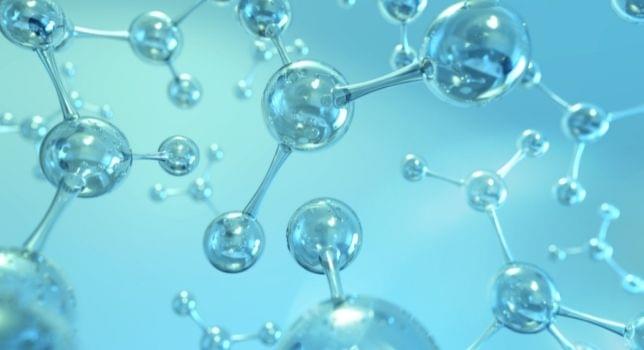Dr. Charles Nyamekye presented the webinar
5-Batch Analysis (Preliminary Analysis): Identifying Opportunities and Overcoming Challenges, as part of the ACS AGRO Lunch& Learn Series. He provided a brief review on 5-batch preliminary testing and method requirements and highlighted strategies developed and lessons learned to overcome the challenges faced in registering different types of products with global regulatory bodies.
Read below for responses to the questions asked during the audience Q&A.
Q: For a 5-batch testing on a TGAI versus a natural product, how long does it take to conduct the analysis?
A: Typically for a TGAI 5-batch analysis, the length of testing is about 1-2 months. This is heavily dependent on information available upfront, such as the details on the manufacturing process and how many impurities are expected for analysis. For a natural product, the length of analysis may take upwards of 3-6 months. This is due to complexity of unknown impurities and/or impurities that are above 0.1% w/w that will require quantitation via enforcement methods that are verified under the SANCO 3030/99/rev. 5 guideline. Overall, the most crucial parameter of the Smithers 5-batch cycle for success is the step where we consult with our clients about the nature of their product.
Q: How is 5-batch requirement different from the global regulatory prerequisites? For example, if I want to register the product in Europe or South America, are the requirements different?
A: The EU guidance for the 5-batch analysis largely follows the US, however there are additional data requested for submissions for various South American countries. Some of those additional data include 3D chromatograms to demonstrate impurities were not overlooked in the preliminary screen, analyte ID by techniques such as MS spectra, NMR, UV spectra, and IR, and Certificates of Analysis (COAs) for each batch to be analyzed. Effectively, if we perform a 5-Batch analysis to EU and US standards the methods will meet the criteria for African and South American countries but may require additional specific aforementioned criteria. It is recommended to design a study that will meet the most stringent of the combined legislation for the regions anticipated for submission.
Q: Are analyses performed under SANCO 3030/99/Rev.5 accepted by EPA?
A: Yes, analyses performed under SANCO 3030/99/Rev. 5 are accepted by the EPA.
Q: You used 300°C temperature in the GC analysis for the biopesticides. Do you think there may be chances of denaturing the original molecules using high temperatures, as these molecules are very thermolabile?
A: Yes, there is a possibility of denaturing the biological molecules when the GC analysis temperature is at
300 °C, however a solvent carrier to inject on an analytical system could also denature biological compounds such as enzymes. We typically employ multiple analysis techniques, such as HPLC-DAD or LC-MS/MS, to ensure all components are being evaluated appropriately. Methods are then validated with conditions that are necessary for each material, such as lower GC temperatures to better align for analysis for biopesticides.
Q: Does Smithers have experience on the 5-Batch of the metallic pesticides with ICP-MS?
A: Yes, we have experience and have conducted ICP-MS analysis of metals within our clients’ products.
Q: Does the 98% apply to biopesticides, such as coming out of fermentation?
A: If you are performing a 5-batch study, it is our understanding for EU registration 98% closure does apply to your product of interest. It is still somewhat unclear for the US, however we make every attempt to obtain closure, however scientific justification to discuss <98% closure may be necessary due to the nature of the product itself. The requirement is used to demonstrate technical equivalence of any new sources – “If the new source has the same or less harmful effects due to its impurities compared to the reference source, then the new source can be considered (eco)toxicologically equivalent to the reference source.” The 98% closure/mass balance is covered in the EU 283/2013 1.11 and FAO guidance. The specifications states "Typically the unidentified and/or unaccountable fraction of the TC/TK should not exceed 20 g/kg." The upper level of mass balance is also important, FAO guidance states “the acceptable range is 980 to slightly >1000 g/kg; sums significantly >1000 g/kg may indicate poor analytical control or poor accuracy, with one or more components being overestimated." In practice many people just reflect an equal variance above and below 100 (98-102% w/w).
Q: Do the 5 lots need all come from commercial scale production?
A: It is probable that the 5-batches/lots tested would need to come from a commercial scale production, as there could be differences in impurity formation as a result of scaling the manufacturing process to generate larger quantities of material. However, it is not uncommon for clients to provide us with samples from a pilot scale to provide an early indication if it will meet the 5-batch requirement. If the batches/lot meet the regulatory requirement, then our client can have the confidence to move on to commercial scale production. If there is no significant difference between pilot and commercial scale data, pilot data could be used. However, we most commonly perform the 5-batch analysis again on the commercial production batches for global registration.
Q: How does this apply to biologicals like Bacillus strains?
A: The EPA recommends scheduling a pre-registration meeting with the BPPD (Biopesticides and Pollution Prevention Division) in advance of performing studies to understand if data waivers or tolerance exemptions are suitable. If a 5-batch analysis on microbial pesticides like Bacillus strains is required, it can be performed. We will first need to identify the active ingredient and/or parameter(s) of interest. The A.I. can be based on cell counting method after treatment of the cells. Water content and sulphated ash analyses can also be conducted. Lastly, if applicable, we can look at LC-MS/MS accurate mass/identification of key analytes within the biological material.
Q: For a biological A.I., what information on the material do you require for you to run a 5-batch analysis?
A: We will first need to identify the active ingredient and/or parameter(s) of interest. This can be achieved by having a discussion about what the technical grade material is, the identity and expected components or abundance of the A.I., and ideally information on the starting materials and production process. A pre-registration meeting with the BPPD (Biopesticides and Pollution Prevention Division) would also be helpful here to ensure the correct parameters are defined.
Q: What is your standard method to quantitate an unknown, correlation factor of nearest known peak, correlation factor of technical or area percent?
A: For an unknown (conventional pesticide) sample, area percent is generally a good starting place, which could utilize correlation to a closest known peak assuming the properties of those materials are similar. A NIST library match can be used to suggest possible materials to be used as a surrogate reference standard if a true external reference standard is not available or unable to be confidently identified. There are pros and cons to use of various detectors (such as GC-FID or HPLC-ELSD) that need to be considered when screening for unknowns. Additionally, prior to these analysis, identification and confirmation of the analyte via GC-MSD with NIST Library match, and/or TOF-LC-MS/MS can be utilized.
Q: Is the 5-batch requirement the same for proteins or nucleic acids?
A: These materials may fall under the OCSPP 880 guideline series of testing. The same recommendations made for biologicals would also apply to proteins or nucleic acids as a good starting point, as further clarification and discussion with EPA and BPPD would be beneficial.
Q: Going from pilot scale operation to full commercial production, do you have to re-do the 5 lots?
A: Yes, if the manufacturing process of your product has changed when production is switched from a pilot scale to an industrial scale for commercial production, the latter is considered as a different source.
Q: What is your typical pricing for a 5-batch analysis?
A: Unfortunately we cannot give an accurate answer as the pricing for a 5-batch analysis depends on the complexity of the analysis. Mainly, if impurities are deemed to be above 0.1% wt/wt, we will need enforcement methods following SANCO 3030/99/Rev.5 to validate the impurity/s of interest prior to conducting the 5-batch testing. This can result in a wide variety of costs from project to project especially, if a product contains several significant impurities at >0.1% wt/wt, then all of these impurities will need to be identified and validated.
Q: Have you used surrogate standards to validate and quantify analytes that do not have a standard available?
A: Yes, we have successfully used surrogate standards for method validations.
Q: I have a question on the method validation. For the accuracy of the active ingredient reproducibility, limit of detection and quantification are not required under SANCO guideline. However, the authority in South America requires LOD and LOQ in the validation study. How would Smithers address a situation like this if following under SANCO guideline? Assume it's a botanical substance.
A: Per the SANCO 3030/99 Rev. 5 guideline, specificity & selectivity, detector linearity, sensitivity, precision (Horrat value), and accuracy (marginal vs. total recovery) are required parameters that need to be met. The reason that LOQ is not included is due to preciseness of the nomenclature, and to match with EU Regulation 283/2013 (it having previously been referenced in SANCO/3030/99 rev 4.)
Due to the variability of batches that may be tested, a true LOQ and LOD cannot be determined in validation employing one representative batch, neither does the validation level chosen for recovery and precision experiments need to be set lower than the specification level (or 20% less for relevant impurities), even if the method LOQ could be lower. It is a question of whether the method is fit for purpose for the intended analyses, rather than demonstrating its limits.
However, this lowest concentration tested, at which an acceptable mean recovery with an acceptable percent relative standard deviation (RSD), still meets the requirements for LOQ determination in Brazil, provided signal:noise is ≥10. Therefore, the Brazilian assessment of LOQ can be seen as equivalent to the lowest validation level set, and no further levels would need validated.
In terms of LOD for Brazil, this can be referenced as an arbitrary calculation as per ABNT NBR 14029, thus fulfilling this requirement without causing confusion in the report with other regulatory authorities.
It is important for us to understand intended use of the methods and 5-batch study at the time of project scoping to ensure the studies are compatible with regional guidelines and regulations.
Q: Do you use high-resolution MS? What mass accuracy do you achieve?
A: Our Triple TOF 5600 mass spectrometer with calibrant delivery system (CDS) is a high-resolution instrument. The mass accuracy depends on the m/z but usually 1-2 ppm. At m/z 100, a difference of 0.001 Da is a 10 ppm mass error.
.jpg?ext=.jpg)
.jpg?ext=.jpg)

